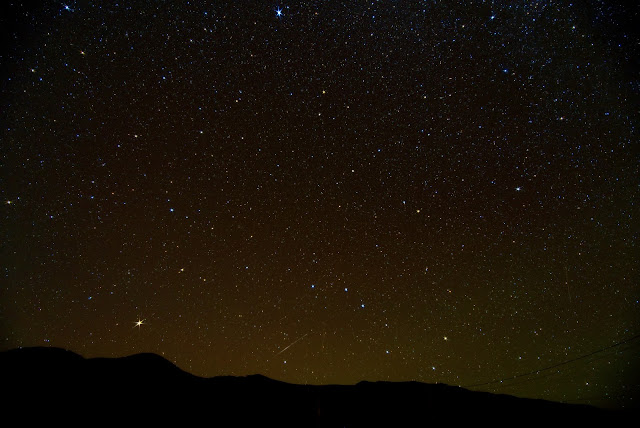In the late evening (10 pm MDT) at the end of August the Milky Way is standing tall in the southern sky. Thursday night the sky was reasonably dark (sqml=21.45) and there was no breeze. A few clouds lingered over the mountain ridges.
 |
| Sony A7iii + Laowa 15mm f/2 + Hoya Sparkle-6 filter. |
Some faint red and green airglow was picked up by the camera in the northern sky.
 |
| Arcturus and the Big Dipper setting over Bristol Head. |
The star at the top of the above image is Vega. Arcturus and Vega have nearly the same brightness and are the fourth and fifth brightest stars in the sky, after Sirius, Canopus, and Alpha Centauri.
This was a good night to try out some more imaging with the Seestar S50 robotic telescope. After leveling the tripod and calibrating the internal compass, it seemed to have no trouble finding objects selected from its internal database. It was possible to sit comfortably indoors and use an iPad to watch images accumulate in real time. The images in the following montage were all obtained with exposure lengths between 2 to 5 minutes. Clockwise from upper left the objects are: M22 (globular cluster in Sagittarius), M27 (Dumbbell Nebula in Vulpecula), M20 (Trifid Nebula in Sagittarius), M13 (Great Hercules globular cluster), M16 (Eagle Nebula in Serpens), M8 (Lagoon Nebula in Sagittarius).

No comments:
Post a Comment
Comments are moderated.